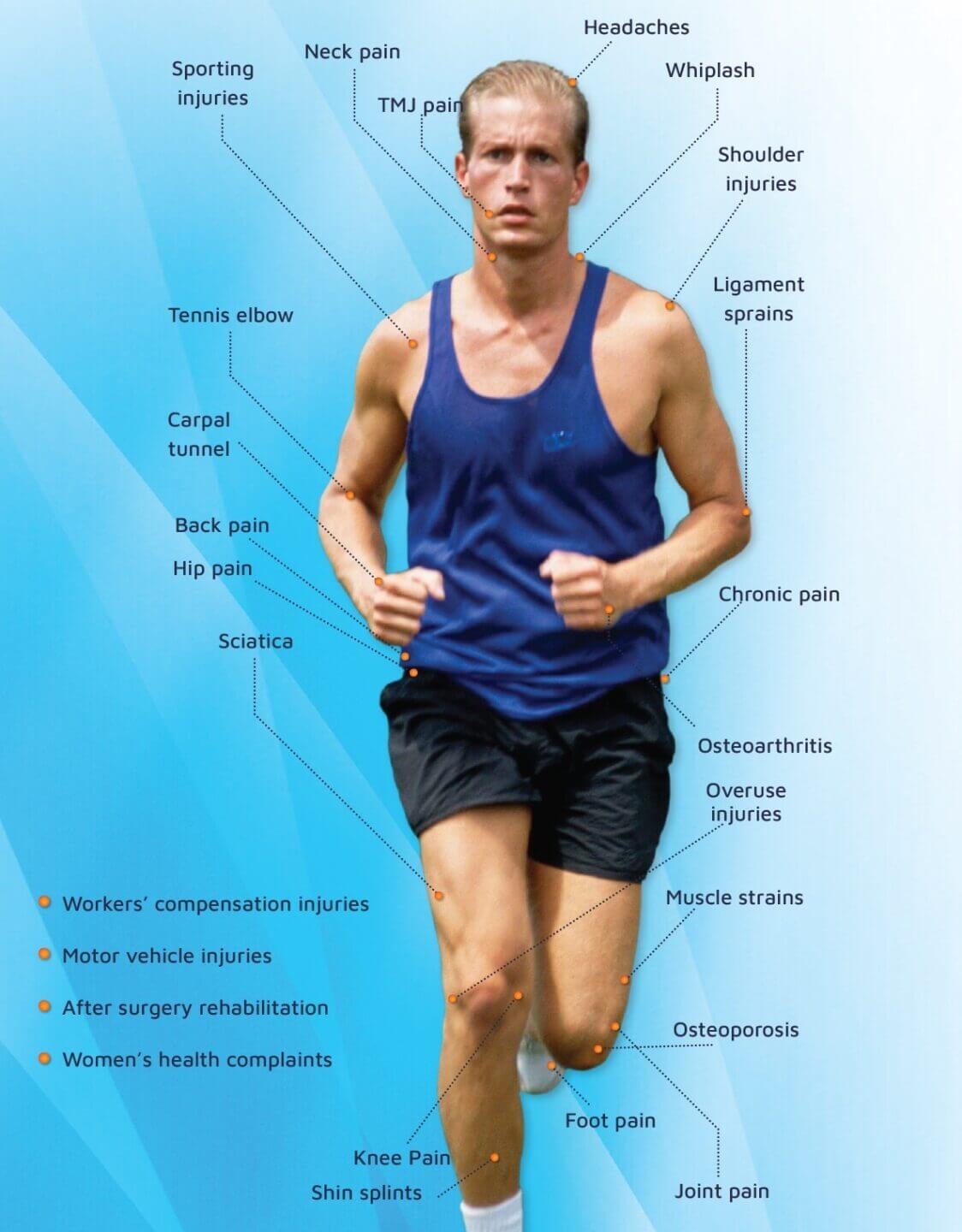
Physiotherapy Treatments
We set ourselves apart by listening to you, providing effective physiotherapy treatment, honest advice, and a fresh approach. Our allied health therapists work closely with you to help you improve your movement potential and gain a healthier body.
Arthritis
Arthritis is inflammation of the joints. It can happen to a singular joint or multiple, causing stiffness and tenderness that unfortunately worsen with age. The cause of arthritis varies on the person and the type of arthritis they have (there are more than 100 different types!). You can read more about it in our recent article on how Physiotherapy can help with Arthritis.
Biomechanical dysfunction
Pain is caused by how your body (bio) moves (mechanics). If there is poor biomechanics, the involved joints/muscles/nerves undergo pressure they’re not familiar with, causing irritation and aggravation of the area resulting in pain.
Chronic pain
Persistent pain that is ongoing and last for more than six months. It is pain that lingers even after the illness or cause has healed. You can read more about it in our recent article on how Physiotherapy can help with Chronic Pain.
Headaches
Pain in any part of the head that ranges from sharp to dull ache. The cause, duration, and intensity of headaches can vary according to the type of headache. You can read more about it in our recent article on how Physiotherapy can help with Headaches.
Joint pain
Physical discomfort where two or more bones meet to form a joint. This ranges from mild to disabling. You can read more about it in our recent article on how Physiotherapy can help with Joint pain.
Lower back pain
Pain affecting the lower portion of the spine is caused by injury to muscles or ligaments from acute injury or chronic overuse. You can read more about it in our recent article on how Physiotherapy can help with Lower Back Pain.
Neck pain
Pain in the neck or shoulder that has different intensities, ranging from aching to electric shock feel. You can read more about it in our recent article on how Physiotherapy can help with Neck Pain.
Sciatica
Pain that runs down one or both legs from the lower back that radiates along the sciatic nerve. Typically feels like a burning or shooting pain starting in the lower back or buttocks and radiates down the leg/s. You can read more about it in our recent article on how Physiotherapy can help with Sciatica.
Sporting injuries
Often sprains and strains, knee injuries or tennis elbow, caused by overuse, direct impact, or use of force while playing sport. You can read more about it in our recent article on how Physiotherapy can help with Sporting Injuries.
Sprains and strains
Sprains are the overstretching or tearing of ligaments which is a fibrous connective tissue that attaches bones to bones. Strains are the overstretching or tearing of muscular tendons that attach the muscle to the bone. You can read more about it in our recent article on how Physiotherapy can help with Sprains and Strains.
TMJ pain
Pain in the temporomandibular joint, which is the point that connects your lower jaw to your skull on both sides of your head, and pain in the muscles that control jaw movement. You can read more about it in our recent article on how Physiotherapy can help with TMJ Pain.
Whiplash
Neck pain and stiffness due to forceful, rapid back and forth movement of the neck. The pain often worsens with neck movement. Sometimes presents with fatigue, dizziness, tingling or numbness down the arm, and headaches starting at the base of the skull. You can read more about it in our recent article on how Physiotherapy can help with Whiplash.
